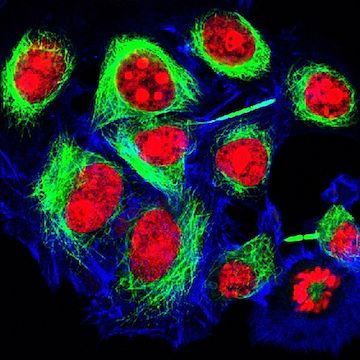Primary cancer cells and tissue
Most primary tumours contain multiple subclones and have genetic heterogeneity since one of the hallmarks of cancer is genome instability. The majority of
cancer cell lines are propagated through hundreds of passages and as a result a single clone dominates the culture and the genetic heterogeneity of the
primary tumor is lost. Therefore, primary tumor cells and tissues are an extremely valuable resource for understanding the biology of human tumors and how
tumors respond to therapies.
Through Axol's custom cell and tissue sourcing service, we can access fresh frozen or formalin-fixed, paraffin-embedded primary human tumor tissue from fully informed consenting donors. We can supply primary tissue for a wide range of cancers including the following:
